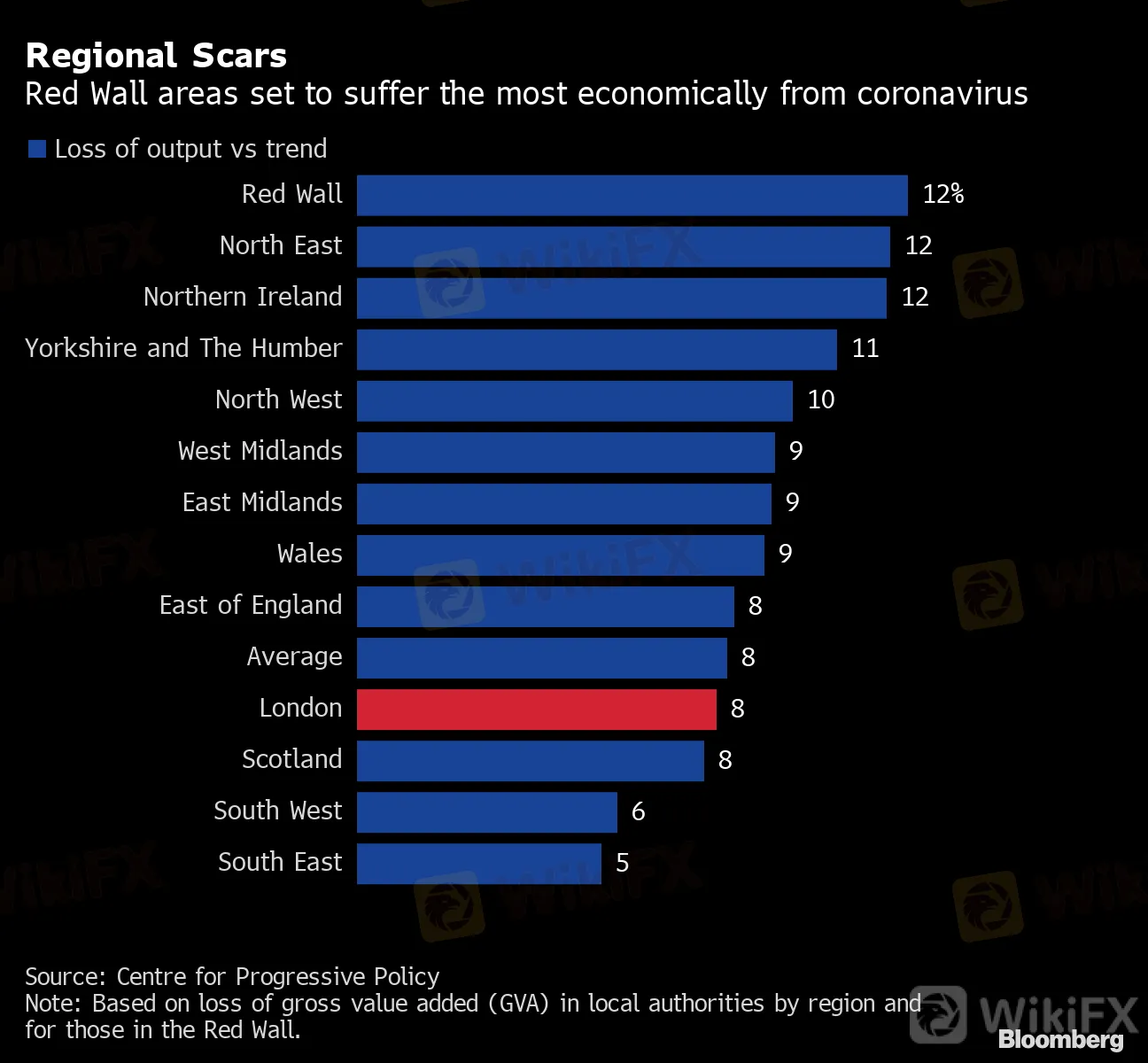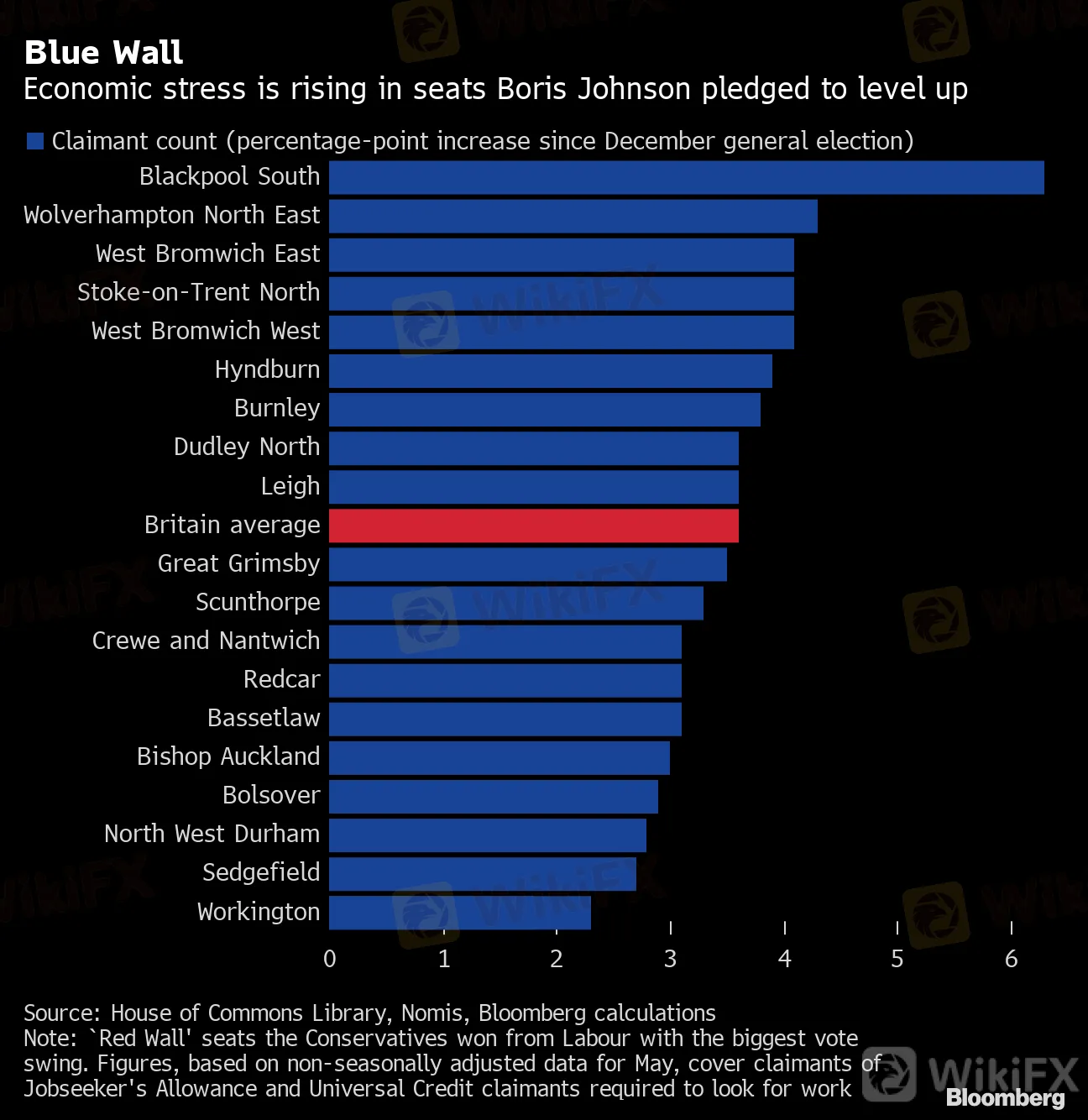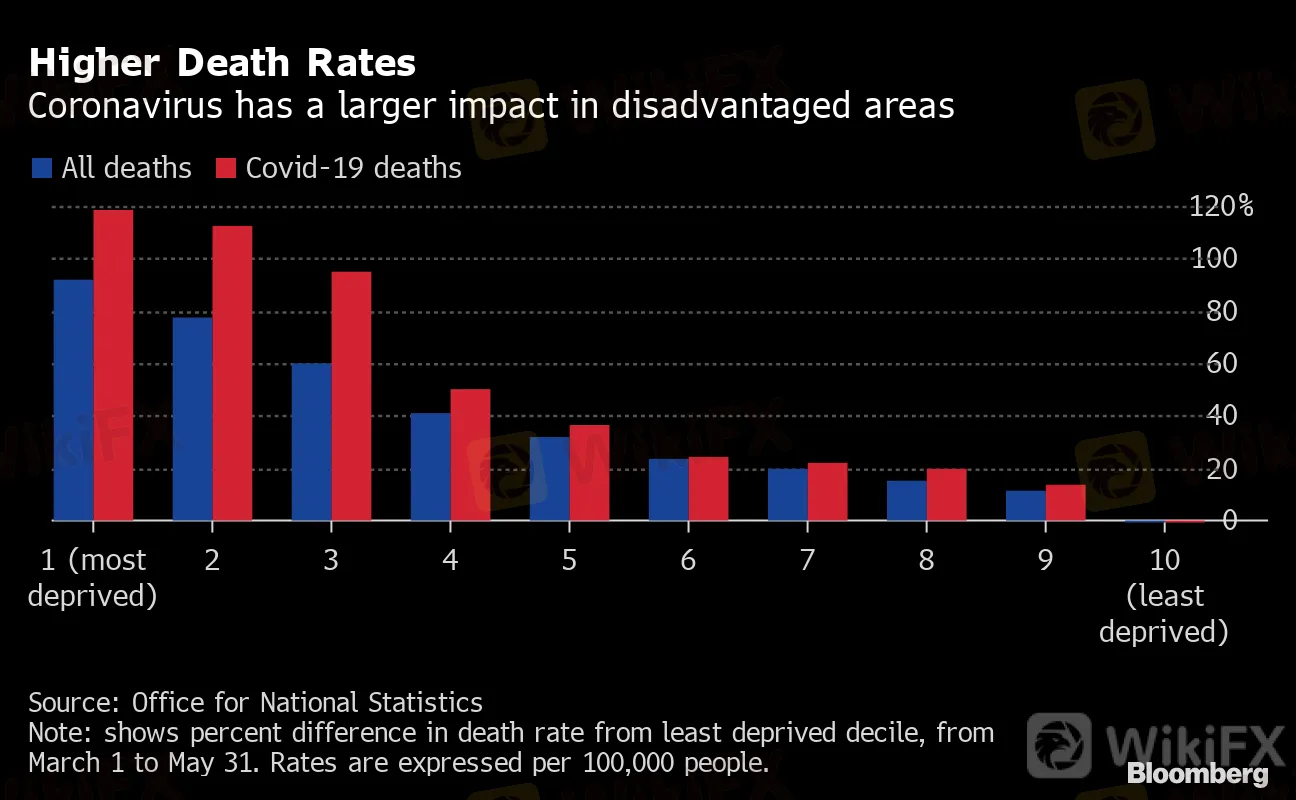简体中文
繁體中文
English
Pусский
日本語
ภาษาไทย
Tiếng Việt
Bahasa Indonesia
Español
हिन्दी
Filippiiniläinen
Français
Deutsch
Português
Türkçe
한국어
العربية
Brexit Heartlands Pay the Highest Price for Coronavirus
Abstract:Four charts show how Prime Minister Boris Johnsons promise to “level up” the country just got harder.
The Brexit-supporting regions that propelled Prime Minister Boris Johnson into power are now being disproportionately hit by coronavirus and will bear the brunt of the economic fallout.
Outside London, the northwest and northeast of England are experiencing the highest death rates. The “Red Wall” of traditionally Labour-voting districts that defected to Johnsons Conservatives is also set to face a downturn twice as profound as the richest areas mainly around London.
The U.K. has recorded the most deaths after the U.S. and is likely headed for the deepest recession of any of the worlds largest economies. Already facing criticism for his handling of the pandemic, Johnson is at risk of compounding the economic damage from the virus by failing to secure a trade deal with the European Union by the end of the year—something that would spell pain for businesses in the same districts he promised to “level up” after Brexit.
Where Poverty, Brexit and Covid Collide
North England areas with high levels of deprivation and covid-19 cases
Sources: The English Indices of Deprivation 2019: Ministry of Housing, Communities & Local Government; Electoral Commission; Public Health England

{777}
The problem is that Britain had taken longer than many other advanced economies to recover from the global financial crisis amid the deepest budget cuts of the postwar era. The U.K. trailed behind Canada, Germany, France and the U.S. in returning to pre-crisis levels of output, according to data compiled by Bloomberg Economics.
{777}
{25}
The country is also enduring the worst levels of productivity since the Industrial Revolution. That‘s put the onus on the government to come good on promises to invest heavily in deprived regions, and make sure there’s a new trade accord in place with the EU to avoid tariffs and customs checks from next year.
{25}
Regional Scars
{28}
Red Wall areas set to suffer the most economically from coronavirus
{28}
Source: Centre for Progressive Policy
Note: Based on loss of gross value added (GVA) in local authorities by region and for those in the Red Wall.

“The stakes are very high, particularly where youve got places that have taken a big economic shock from Covid-19 on top of a history of regional inequalities,” Anna Round, a senior research fellow at think tank IPPR North, said by phone from the northeast city of Newcastle. “There are areas in the north that are going to need particular measures in the recovery.”
Many of the areas that have struggled are dependent on industries that have been affected most by the crisis including aerospace, tourism and hospitality, and construction.
Blue Wall
Economic stress is rising in seats Boris Johnson pledged to level up
{40}
Source: House of Commons Library, Nomis, Bloomberg calculations
{40}{41}
Note: `Red Wall' seats the Conservatives won from Labour with the biggest vote swing. Figures, based on non-seasonally adjusted data for May, cover claimants of Jobseeker's Allowance and Universal Credit claimants required to look for work
{41}
{43}

The pandemic has exacerbated inequalities in the U.K. Chancellor of the Exchequer Rishi Sunaks promise to rejuvenate left-behind areas has been temporarily put on hold as the government turns its attention to providing emergency stimulus.
{43}
{45}
Residents in electoral districts that saw the biggest swings to the Tories have seen sharp increases of people seeking jobless aid.
{45}
{47}
The U.K. is already more regionally divided in terms of productivity, income and health than any comparable economy. Even before the pandemic, life expectancy was lower in northern England. Now, death rates from coronavirus are higher in deprived areas, many of which are in the north.
{47}
{49}
Higher Death Rates
{49}
Coronavirus has a larger impact in disadvantaged areas
Source: Office for National Statistics
{53}
Note: shows percent difference in death rate from least deprived decile, from March 1 to May 31. Rates are expressed per 100,000 people.
{53}

One key to fostering longer-term recovery will be infrastructure spending, said Liz Martins, an economist at HSBC. The question is whether the government will double down on the “leveling up” agenda and create jobs should unemployment jump.
“The disproportionate hit makes it more urgent than ever,” said Martins. “The worry is that the government scales back its former plans because of all the unexpected spending it has had to do to cushion the blow from the lockdown.”
— With assistance by Neil Callanan, Lucy Meakin, and Dan Hanson
Disclaimer:
The views in this article only represent the author's personal views, and do not constitute investment advice on this platform. This platform does not guarantee the accuracy, completeness and timeliness of the information in the article, and will not be liable for any loss caused by the use of or reliance on the information in the article.
WikiFX Broker
Latest News
Hackers Charged for $11M Crypto Theft Using SIM-Swaps
Role of Central Banks in the FX Market
FCA Alerts Against Sydney FX
What Makes Cross-Border Payments Easier Than Ever?
Trader Exposes Unethical Practices by STP Trading
Bitcoin Nears $100,000: A Triumph of Optimism or a Warning Sign?
Malaysian Man Loses RM113,000 in Foreign Currency Investment Scam
Mastercard Partners with JPMorgan for B2B Cross-Border Payments
FCA Identifies Clone Firm Exploiting Admiral Markets' Credibility
Coinbase Under Scrutiny Amid Wrapped Bitcoin Delisting Controversy
Currency Calculator


